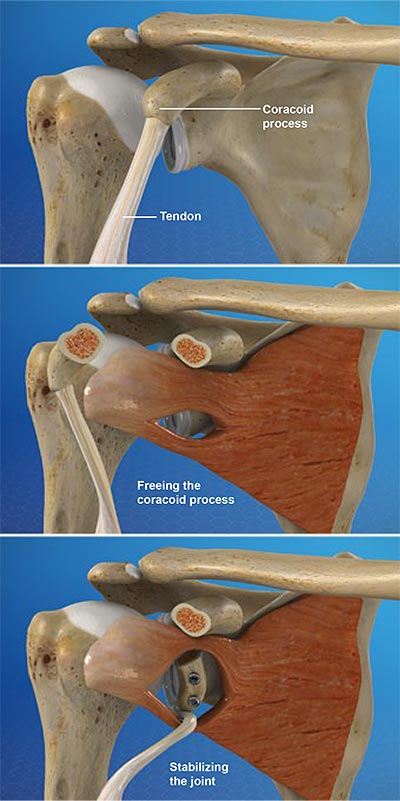 Overview
OverviewThis surgical procedure modifies your shoulder socket. It helps keep the head of the humerus from slipping out of the glenoid. You may benefit from this procedure if you have frequent shoulder dislocations.
Preparation
In preparation for the procedure, you are anesthetized. You are placed in a reclined position. If you are having an open procedure, your surgeon creates a small incision in the front of your shoulder. If you are having an arthroscopic procedure, your surgeon instead makes a series of tiny openings for the arthroscopic instruments.
Freeing the Coracoid Process
The surgeon accesses the coracoid process. This is a bony protrusion that sticks out from the scapula. A tendon of the the biceps brachii muscle is connected to the end of this bone. The surgeon frees the end of the coracoid process, along with this tendon.
Stabilizing the Joint
Next, the surgeon creates a split through the subscapularis muscle. This allows access to the shoulder socket. The surgeon prepares the front of the glenoid to create a stable surface. The freed coracoid bone and attached tendon are placed through the split. The coracoid is positioned against the glenoid. It is anchored to the shoulder socket with screws. This extra bone will prevent the humerus from slipping forward out of the shoulder socket.
End of Procedure and Aftercare
When the procedure is complete, the openings in your skin are closed. Your arm is placed in a sling. Your surgeon will provide instructions to aid your recovery.
